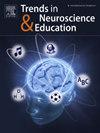Predicting neuromyths among counselors and counselor educators
IF 3
Q2 NEUROSCIENCES
引用次数: 0
Abstract
Background
Neuromyths are prevalent in counseling and counselor education, potentially promoting harmful, unproven methods. This study examines the factors that predict the prevalence of neuromyths among counselors.
Methods
A cross-sectional survey was conducted with 415 participants, including counselors-in-training, practitioners, educators, and supervisors. The survey measured neuromyth endorsement using a 15-item questionnaire and assessed demographic characteristics, neuroscience knowledge, and the use of nine information sources. Hierarchical linear regression analysis was used to identify predictors of neuromyths.
Results
Predictors accounted for 9.0% of the variation in neuromyths (F = 4.775, p < .001). Counselors with higher educational levels endorsed fewer neuromyths compared to those with bachelor’s degrees. The use of books was associated with fewer neuromyths (β = .144, p < .01), whereas reliance on TV predicted higher neuromyth endorsement (β = -.187, p < .001).
Conclusion
Promoting accurate neuroscience knowledge through credible sources can reduce neuromyths in the counseling profession.
预测心理咨询师和心理咨询教育者的神经迷思
背景:神经学神话在咨询和咨询教育中很普遍,潜在地促进了有害的、未经证实的方法。本研究探讨预测心理咨询师中神经迷思盛行的因素。方法采用横断面调查的方法,对415名参与者进行调查,包括在职辅导员、从业人员、教育工作者和主管。该调查使用了一份15项的问卷,评估了人口统计学特征、神经科学知识和9个信息源的使用,来衡量神经神话的认可程度。采用层次线性回归分析确定神经神话的预测因子。结果预测因子占神经神话变异的9.0% (F = 4.775, p <;措施)。与拥有学士学位的人相比,受教育程度较高的咨询师更少认同神经神话。使用书籍与较少的神经神话相关(β = .144, p <;.01),而对电视的依赖预示着更高的神经神话认可(β = -。[au:] p <;措施)。结论通过可靠来源推广准确的神经科学知识,可以减少心理咨询行业的神经误区。
本文章由计算机程序翻译,如有差异,请以英文原文为准。
求助全文
约1分钟内获得全文
求助全文
来源期刊

Trends in Neuroscience and Education
NEUROSCIENCES-
CiteScore
6.30
自引率
6.10%
发文量
22
审稿时长
65 days
 求助内容:
求助内容: 应助结果提醒方式:
应助结果提醒方式:


